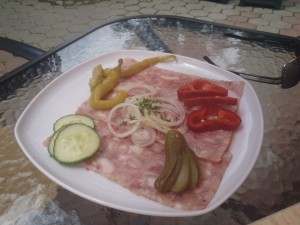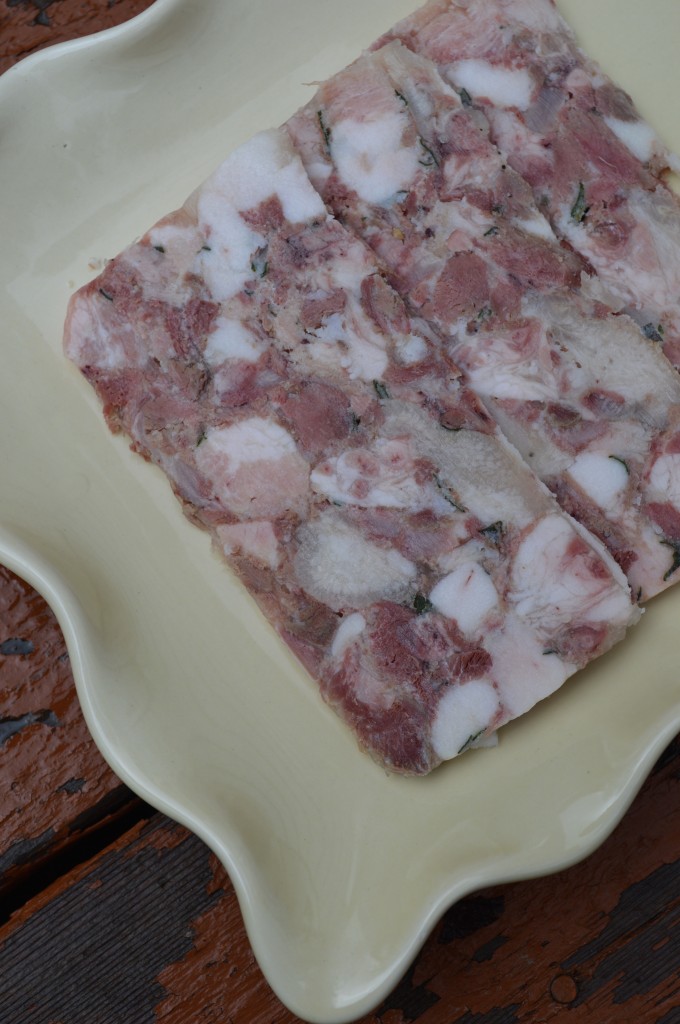 Preßwurst, transliterated “presswurst” and pronounced “PRESS-voorst,” is Austrian headcheese.
Preßwurst, transliterated “presswurst” and pronounced “PRESS-voorst,” is Austrian headcheese.
Headcheese is a polarizing preparation with a terrible name, but I think borrowing a trick from Preßwurst can make headcheese much more palatable to North Americans.
Both dishes are made from pork head and trotter. The meat is brine-cured so it is rosy pink, then simmered until tender. The meat is strained, shredded, and packed into a mold with some of the gelatin-rich cooking liquid, which firms into aspic when chilled. Full details on the procedure can be found in this post.
The most important way in which Austrian Preßwurst differs from North American headcheese is that after being packed into the mold, a heavy weight is rested on the shredded meat and aspic. This compacts the meat and forces excess aspic from the mold, making for a dense, cohesive texture. Most North American’s objection (or revulsion) to headcheese is the jelly component. When the terrine is pressed this way, there is no discernible jelly; the gelatin is simply an adhesive that binds the various elements together.
Besides changing the appearance and mouthfeel of the dish, the properly weighted Preßwurst is cohesive enough that it can be sliced very thin, like ham.
To replicate the Austrian version I use a commercial kitchen container called a 1/3 plastic insert as my mold. Once the meat and aspic are packed inside I make a 3 kg weight by adding 3 L of cold water to a second plastic insert that rests on top of the first. The terrine should be refrigerated for at least 24 hours, preferably 48 hours.
I realize now, looking at the photo below, that my mixture has a lot more fat than the true Austrian version above.
